CARBON MANAGEMENT
EGI conducts numerous projects in carbon sequestration wherein large amounts of anthropogenic CO₂ emissions are targeted for injection into deep saline aquifers or other suitable geologic formations.
In partnership with departments and colleges, EGI’s research portfolio on low-carbon technologies includes work in carbon capture, carbon utilization and direct air capture of CO₂.
GLOBAL TEMPERATURES ARE INCREASING
Several ways of reducing CO2 emissions and CO2 levels in the atmosphere include: improved efficiency in power generation by upgrading existing plants, higher efficiency in all new plants, relying more on renewable energy and nuclear-generated power, distribution of energy consumption among other resources and finally, carbon capture and storage (CCS). Of all emissions reduction mechanisms, CCS is projected to provide the largest contribution to emissions reduction in the near-term (~decade time scale).
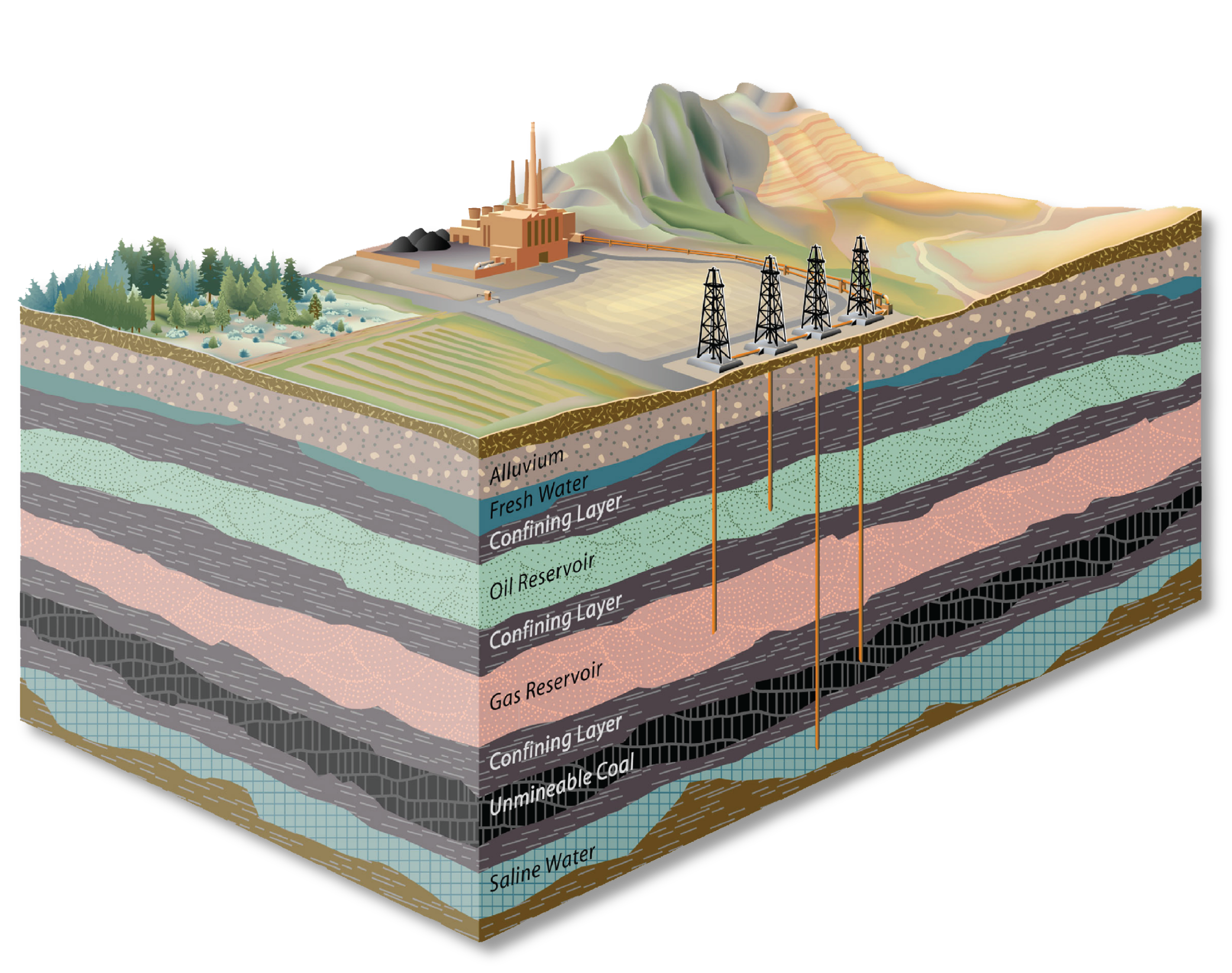
WHAT IS CARBON CAPTURE AND SEQUESTRATION?
Carbon capture and sequestration (CCS) begins with capture of CO2 at its source, such as a coal fired power plant, transporting the CO2 to a location where it can be sequestered or stored safely away from the earth’s atmosphere and oceans.
Three types of CO2 sequestration are under way: terrestrial sequestration, geologic sequestration, and mineralization. Geologic sequestration is storage of CO2 within geological formations under the earth’s surface. Oil, gas unmineable coal and saline water reservoirs are those best suited for CO2 sequestration.
CARBON MANAGEMENT INITIATIVES
1. Uinta Basin CarbonSAFE phase II project
The primary objective of the Uinta Basin CarbonSAFE phase II project is to establish the technical and economic feasibility of a commercial-scale CO2 geological storage complex in the northeast Uinta Basin, Utah, to sequester at least 50 million metric tons of captured CO2 securely and economically from the Deseret Power Electric Cooperative Bonanza Power Plant and other sources in 30 years.
This project seeks to establish feasibility of commercial storage with high-resolution societal analysis, geological characterization, technical analysis, economic evaluation, and environmental analysis. This project will accelerate the Deseret Power’s assessment of commercial-scale CO2 capture, combine additional CO2 sources in the area for a storage hub development, and accelerate economic transition and growth in the communities that have historically been impacted by fossil fuel production.
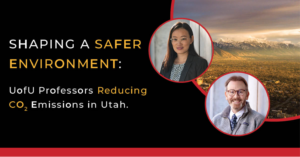
2. San Juan CarbonSAFE
Carbon Storage Assurance Facility Enterprise (CarbonSAFE) Initiative, New Mexico Tech, Los Alamos National Laboratory, Sandia National Laboratory, Enchant Energy, and the University of Utah are working in partnership toward the ultimate goal of storing 72-120 million metric tonnes of CO2 in the San Juan Basin. This U.S. Department of Energy-funded project entails extensive site characterization, drilling a stratigraphic well to validate characterization efforts, acquiring an EPA Class VI permit for injection, performing injections for potentially over two decades, and finally, monitoring the site to ensure there is no leakage.
3. Carbon Utilization & Storage Partnership of the Western U.S. (CUSP)
CUSP is one of four regional U.S. Department of Energy initiatives focused on commercial carbon capture, utilization, and storage (CCUS). CUSP is a consortium of universities, research institutions, state geological surveys, national laboratories, and industry. CUSP states pursue projects unique to their needs, and the University of Utah is focused on gathering data to support analytical and optimization models to evaluate CCUS potential and readiness across the CUSP region to support more rapid implementation of commercial-scale technologies. The partnership collaborates with the three other regional initiatives to form a cohesive national program.
4. Injection Of Flue Gas Improves CO2 Permeability And Storage Capacity In Coal: A Promising Technology
Carlos Vega Ortiz, Palash Panja, Brian McPherson, John McLennan
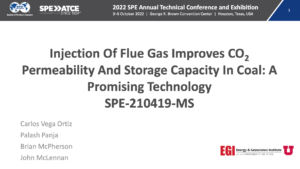
5. Fault Characterization Project
The primary objective of the project is to significantly advance the state-of-the-art technologies for detecting and characterizing faults above and below a target CO2 injection zone. The project team will carry out field deployment of an integrated suite of cost-effective and novel geophysical, geochemical, and geomechanical technologies for detection and characterization of faults and fractures in a characterization well drilled as part of the San Juan CarbonSAFE project. The data and analysis results will be used to assess potential fault activation hazards attributing to large-scale CO2 injection in the San Juan Basin.
6. Intermountain West Sustainability & Transitions (I-WEST)
I-WEST is a U.S. Department of Energy-funded effort to develop a technology roadmap to transition the region to an economically sustainable, carbon neutral energy system. The roadmap will outline ways for the Intermountain West states to meet challenges, capitalize on opportunities, and build an equitable energy transition strategy. I-WEST states include Arizona, Colorado, Montana, New Mexico, Utah, and Wyoming. It is anticipated that the roadmap will be released later this year and the initiative may launch a second phase with efforts focused on implementation strategies. (I-WEST Website)
7. Improving Production in the Emerging Paradox Oil Play
The Paradox Play project is funded by the U.S. Department of Energy and led by the University of Utah. The project team includes the Utah Geological Survey, Brigham Young University, and industry stakeholders. Project efforts focus on direct measurement and characterization of not only the Cane Creek shale production zone, but also the extensive set of alternating clastics and evaporites above the shale. With the newly-drilled field laboratory (9,450’ deep science well), the team is developing the tools and strategies necessary to more completely tap into this underutilized resource while also reducing environmental impacts from imprecise exploration and production activities.
8. SMART Initiative Phase 1
Science-Informed Machine Learning to Accelerate Real-time (SMART) Decisions in Subsurface Applications – The primary goal of the SMART initiative is to transform reservoir management through significant improvements in subsurface visualization, exploiting machine learning technology to achieve speed and enhanced detail. The University of Utah recently concluded its work on Phase 1 of the SMART project and submitted an application to undertake work in Phase 2. As of May 23, 2022, the team is waiting for a response regarding its Phase 2 application.
9. Southwest Regional Partnership (SWP): Phase III Commercial Scale Geologic CCUS Deployment
The primary objective of the SWP Phase III effort is to provide a blueprint for future CCUS projects in the U.S. by exhibiting and evaluating an active commercial-scale CCUS operation, and demonstrating associated effective site characterization, monitoring, verification, accounting, and risk assessment. The project team continues an ongoing site characterization, simulation, monitoring and tracking effort of over one million tonnes net total of CO2 injected in the subsurface of an active and expanding enhanced oil recovery operation in Ochiltree County, northern Texas, and injection is already underway by a commercial operator in the Farnsworth Unit (FWU) of the Anadarko Basin, with the primary target reservoir the Pennsylvanian-aged Morrow Sandstone.
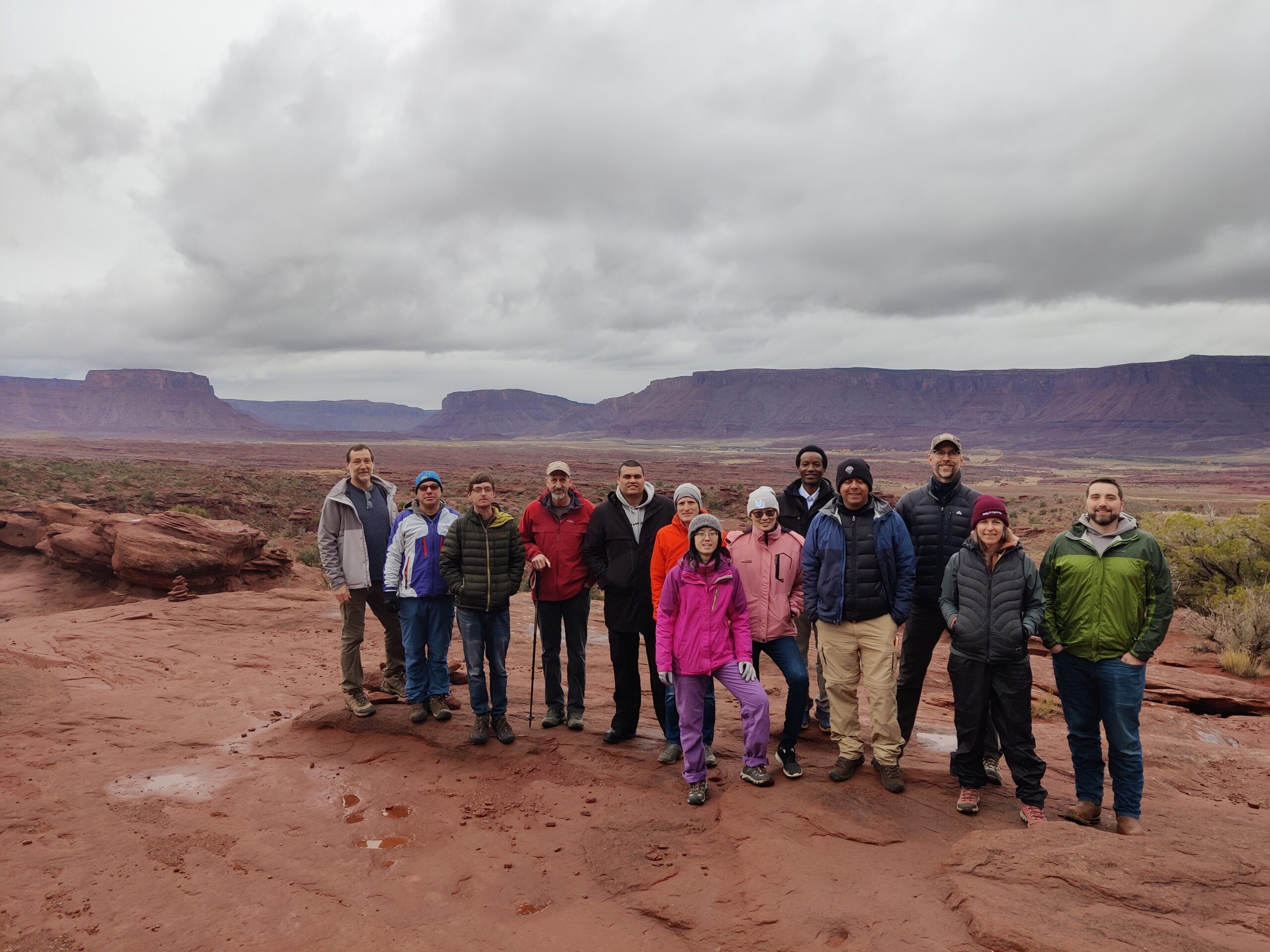
The Carbon Science and Research Initiative on a field trip in the northern sector of the Paradox Basin, near Moab, Utah.

Surface/Subsurface monitoring technologies/methods

Unconventional Play Characterization of the Cane Creek in the Paradox Basin
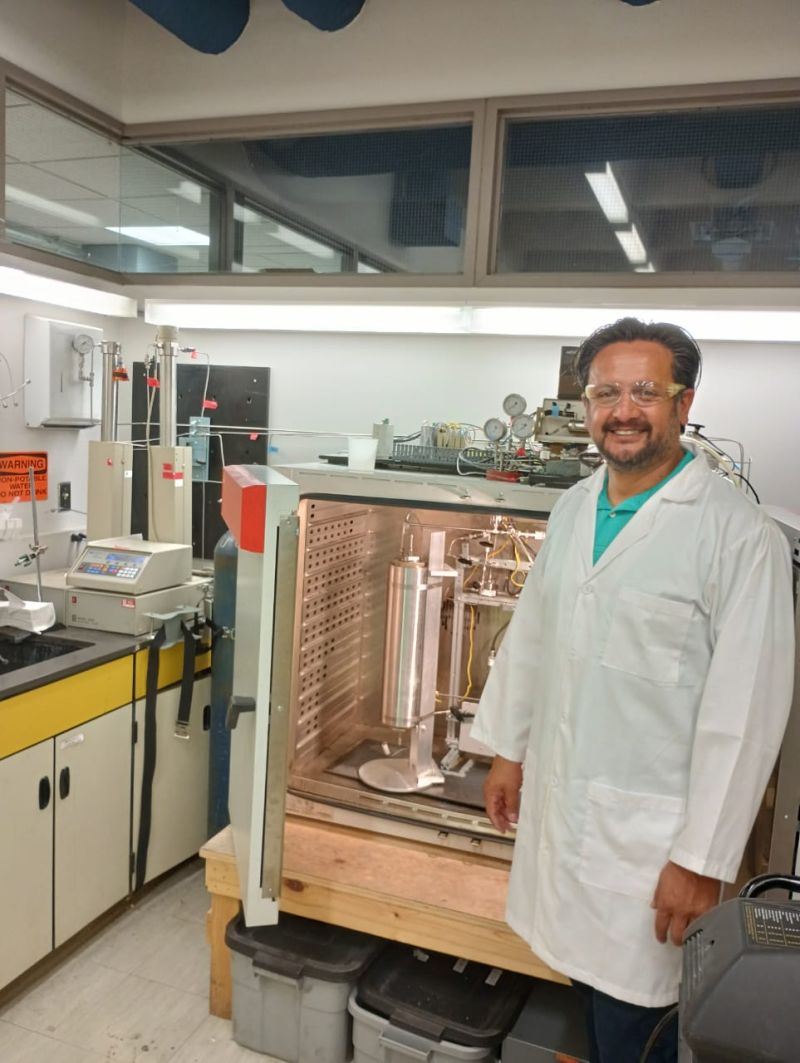
EGI’s Carlos Vega Ortiz stands by his state-of-the-art (self-designed, adapted, and built) bench-scale apparatus for darcy flow measurements with chemo-mechanical coupling at downhole reservoir conditions of temperature and in-situ stress; measuring flowline pressures, porosity, permeability, rock swelling related to CO2 adsorption, and in-line densitometer to identify variable fluid mixtures caused by fluid stratification.
CORPORATE ASSOCIATE MEMBERS
EGI offers Corporate Associate members a competitive advantage in a highly competitive industry with our diverse staff of expert geoscientists, engineering researchers and innovative technical staff.
EGI’s Corporate Associate members gain access to over $850 million of regional and thematic research for only a fraction of their investment.
Expert Geoscientists
Engineering researchers
Innovative technical staff
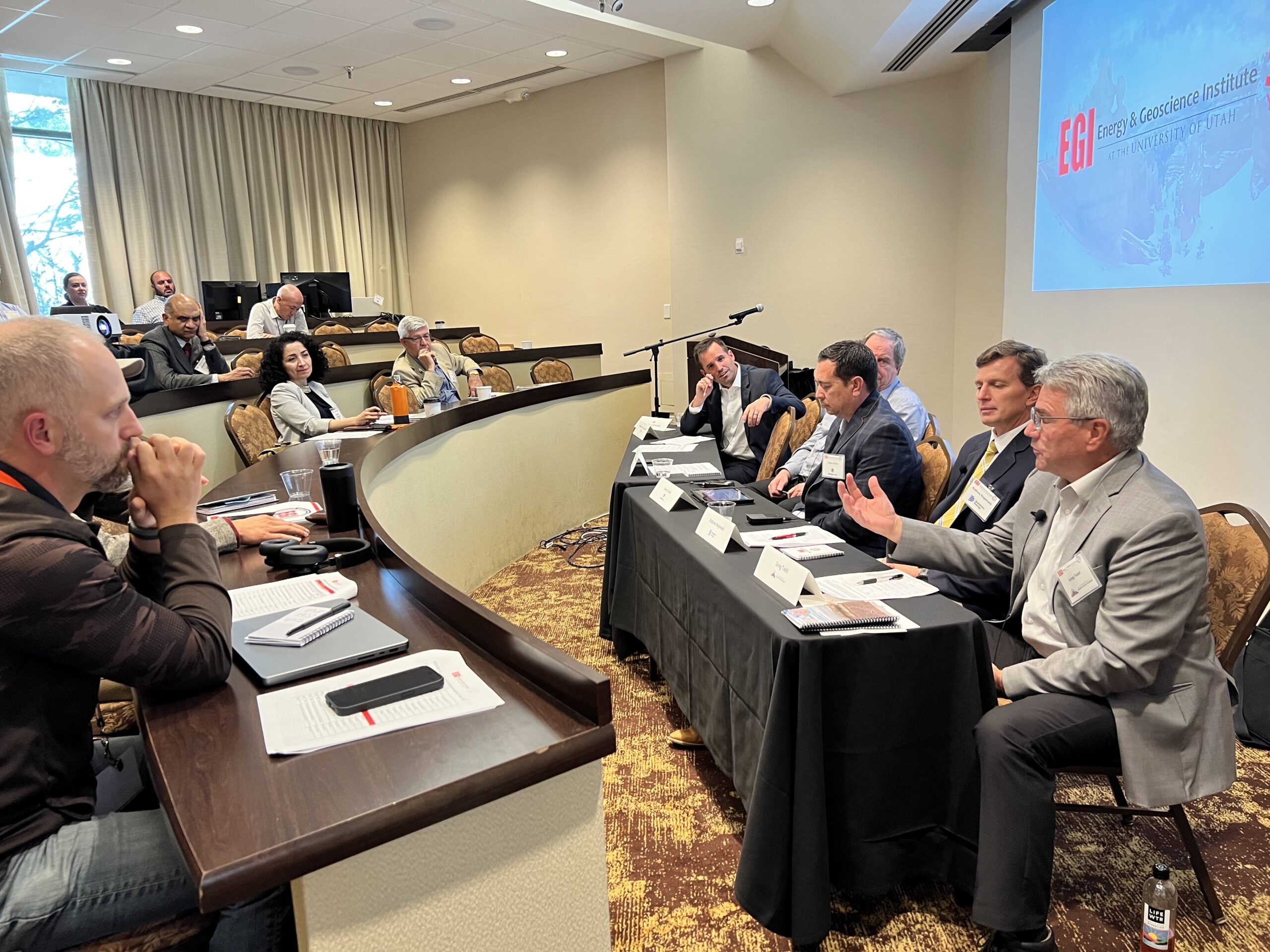
CONTACT US ABOUT BEING A CORPORATE ASSOCIATE MEMBER:
ContactEGI@egi.utah.edu | (801) 581 – 5126
